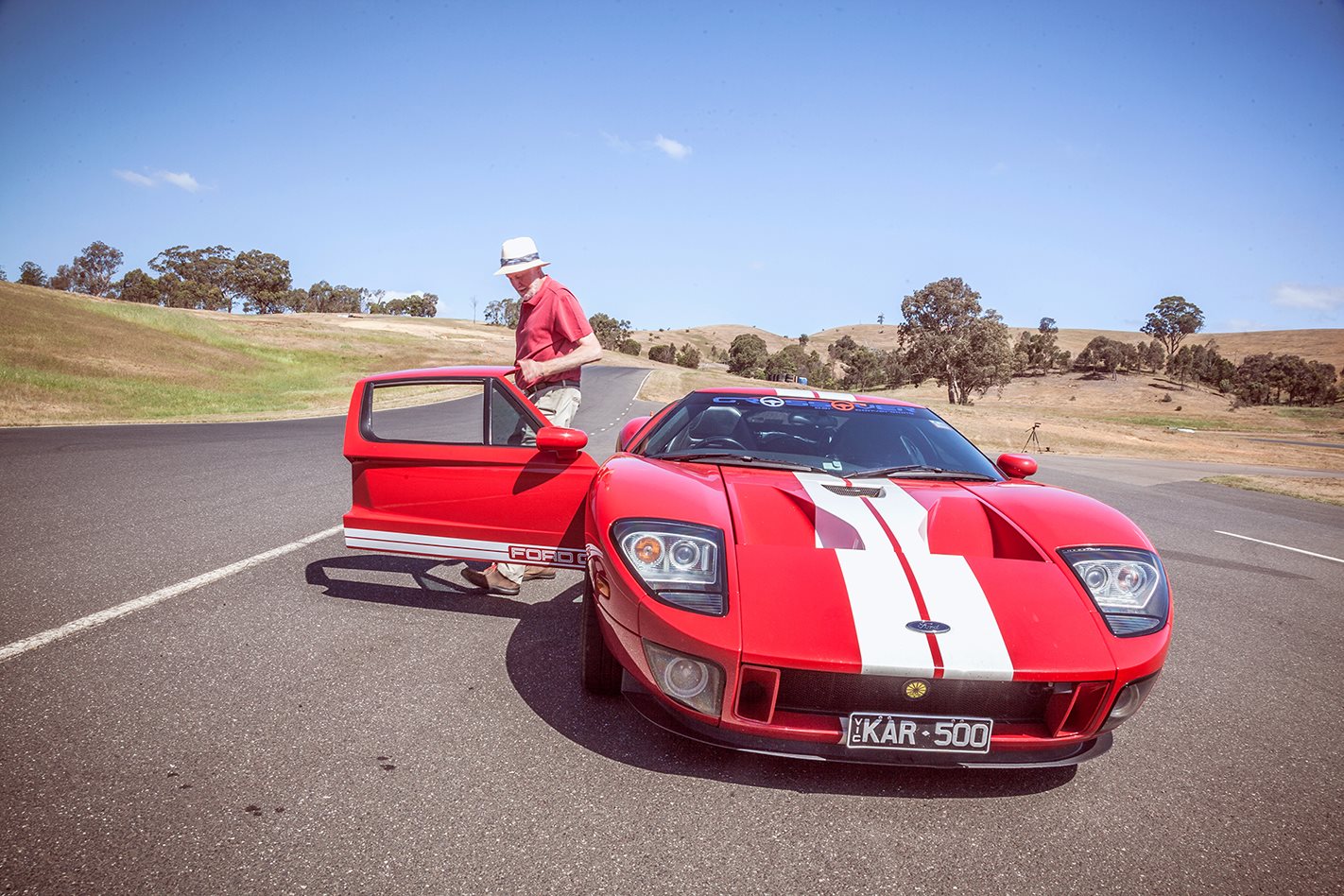TWO unrelated events led me to the GT. Early in 1963 (or was it ’64?) Ford issued a sketch of the proposed GT40, the Lola GT-based sports racing car that eventually evolved to become the GT40.
The drawing, which sadly I can’t find despite hours of internet searching, showed a mid-engine coupe so beyond low it was impossible to conceive. Famously, it was just 40 inches (100cm) high.
The GT40 looked utterly contemporary, instantly leaping a decade ahead of the still-new E-Type Jag in concept and appearance. In hindsight, the gorgeous GT40 vies with the Lamborghini Miura as perhaps the most beautiful sports car ever. Hard to imagine now that Ford of Britain struggled to sell road versions, though favoured motoring writers tested the car. Not me, not in Australia.
Then the great Belgian racing driver Jacky Ickx won Le Mans in 1969 in a GT40, Ford’s fourth successive victory. After 24 hours of racing, the margin over the chasing Porsche 908L was a mere 50 metres or so. The still-alluring Ford, by then considered outdated in racing terms, looked even better in the Gulf team’s now-famous blue and orange livery.
If I dreamed of driving one, I also knew it was an absurd fantasy. However, in 2002 Ford showed a concept of a modern GT40 at the Detroit show. I couldn’t believe they were serious about production, but three years later the GT arrived.
Much longer, wider and taller than the GT40, kind of 10 percent bigger in every dimension, the proportions and character of the original continued. If anything, it looked even more desirable, especially in the way the body flowed over the rear wheelarch and merged into the inbuilt rear spoiler.
I remember Camillo Pardo, the GT’s designer from Ford’s Living Legends studio, telling me: “We wanted to convey ‘GT40’, but it was tough to massage this larger car into the proportion of the low, sexy original. We ended up going through five iterations of modelling. I love that, because it’s the total antithesis of the computer-generated automobile. You can tell somebody has massaged the clay endlessly.”
It was crucial that my Bucket List car drive as well as it looked. That ruled out any late 1950s Detroit iron – think Continental Mark II – or 1960s Italian semi-exotics such as the Fiat Dino Coupe. Nothing else went close to matching the GTs exquisiteness with the serious grunt of a 410kW 5.4-litre V8 (for an 11.2sec 400-metre time), a double-wishbone-suspended chassis and 1540kg weight (the rego sticker claims 1470kg).
Dodging under a door top that forms the roof, the GT feels vast from behind the wheel, the driving position comfortable for my 192cm frame. Soft, too, and relatively quiet except for the supercharger whine, while the power-assisted steering initially feels too light for the task ahead.
Still, I’m reassured by a slick gearshift, strong brakes and the superbly supple ride, while the steering proves so quick it takes time to learn. Yes, the GT lacks ultimate grip by today’s standards, but through direction changes you can feel the delayed weight transfer, and oversteer arrives once you hit the throttle, so its balance can be adjusted relatively easily.
The GT’s road-ability seduces, just as it looks sublime. While the doors inhibit access and the interior is cheapish, Ford’s everyman supercar did not disappoint with its styling, driving and performance.
Simply brilliant.
Did you know?
- Ford produced 4038 GTs from 2004-2006, almost 500 short of the original plan
- The modern GT is three inches (76mm) higher than the original GT40, but Ford decided against calling it the GT43
- A new GT (designed by an Australian) was revealed at the 2015 Detroit show and will be built from 2016, powered by a 3.5-litre twin-turbo V6
Living the dream
“I’VE always been a Ford bloke,” says Ken Rintoule, owner of the GT. “I had an XT Falcon and Fairlanes, a 2007 Super Pursuit Falcon ute and now an FG. I’d seen photographs of the GT and heard hearsay. When I retired 10 years ago, I thought, why not?”
Rintoule, from Nhill in western Victoria, bought the GT in California in 2007 with 6000km on the odo. It cost $US158,000 ($A188,000 in 2007), the right-hand-drive body-in-white conversion another $98,000. With duty and shipping, the total cost reached about $350,000, but he’s been offered $550,000 for the car, one of 10 known right-hand-drive conversions in Australia.
“I put water in it once a year,” says Ken. “It never leaks oil; it’s now done nearly 100,000 kilometres – it’s been to Brisbane, Sydney, Adelaide and Bathurst – and I’ve just changed the clutch and muffler. You do bugger all to it.”
Model: 2005 Ford GT Engine: 5374cc V8 (90°), dohc, 32v, supercharger Max power: 410kW @ 6500rpm Max torque: 678Nm @ 3750rpm Transmission: 6-speed manual Kerb weight: 1540kg 0-100km/h: 3.7sec Economy: 16.6L/100km (US) Price when new: $US139,995 ($A190,400 in 2005)
Sign up here to receive the latest round-up of Wheels news, reviews and video highlights straight to your inbox each week.





